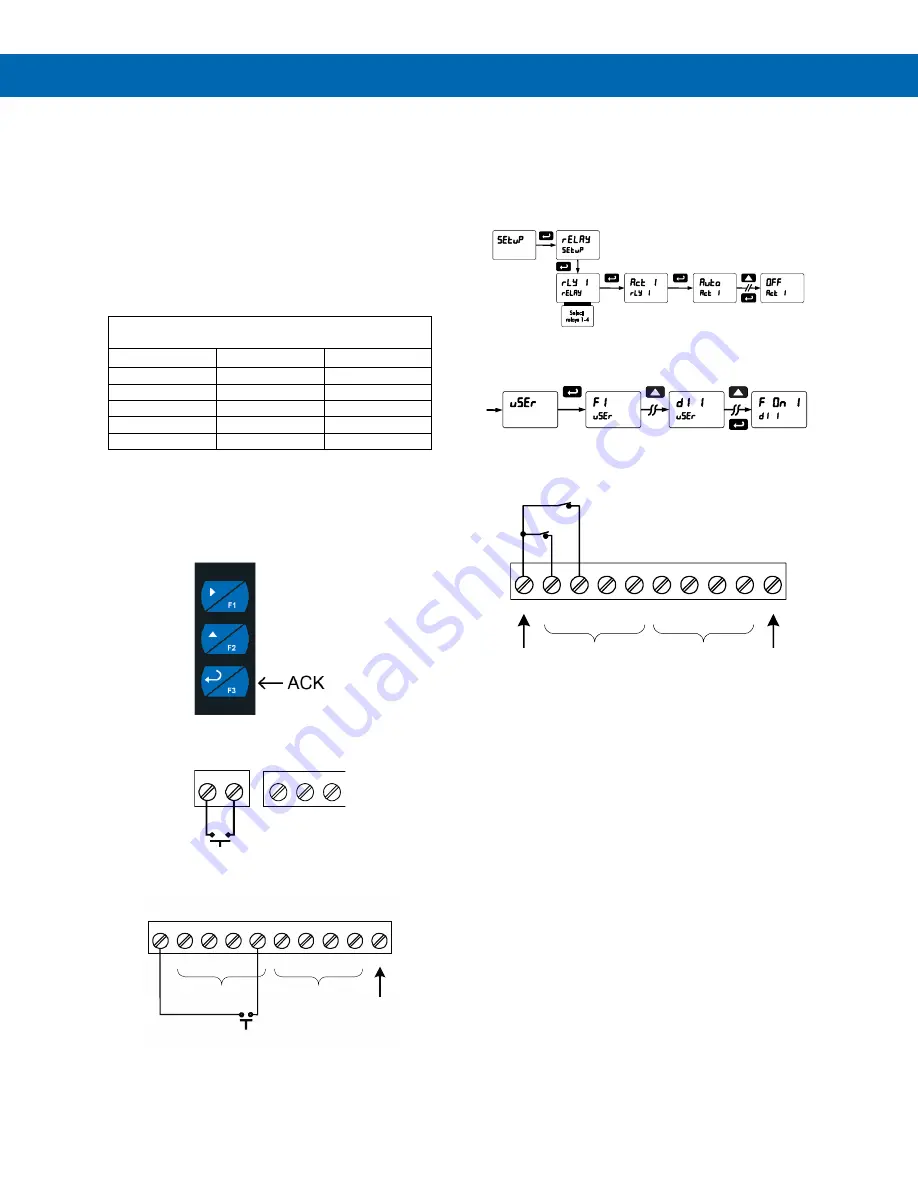
P
RO
V
U
™ PD7000 Temperature Meter
Instruction Manual
27
Latching Relay with Clear (
Lt-Clr
)
In this application, the meter is set up for manual
reset only after the signal passes the reset point
(alarm condition has cleared). Acknowledging the
alarm while it is still present has no effect on either
the LED or the relay. When the alarm is
acknowledged after it returns to the normal state, the
LED and the relay go off. Notice that the LED remains
on, even after the meter returns to the normal
condition. This is because, for latching relays, the
alarm LED reflects the status of the relay, regardless
of the alarm condition.
Manual reset only after
alarm condition has cleared
Condition
LED
Relay
Normal
Off
Off
Alarm
On
On
Ack (No effect)
On
On
Normal
On
On
Ack
Off
Off
Acknowledging Relays
There are three ways to acknowledge relays
programmed for manual reset:
1. Via the programmable front panel function keys
F1-F3 (Example: F3 assigned to ACK).
2. Remotely via a normally open pushbutton wired
to the F4 terminal at the rear of the instrument.
3. One of the digital inputs and the +5 V terminals
on the digital I/O expansion module.
When the ACK button or the assigned digital input is
closed, all relays programmed for manual reset are
acknowledged.
Setting Up the Interlock Relay
(Force On) Feature
Relays 1-4 can be set up as interlock relays. To set
up the relays for the interlock feature:
1. Access the
Setup
–
Relay
–
Action
menu and set
the action to off.
2. In the Advanced features
–
User
menu program
any of the digital inputs to
Force On
any of the
internal relays (1-4).
3. Connect a switch or dry contact between the +5V
terminal and the corresponding digital input (dI-1
to dI-4) terminal.
Interlock Relay Operation
Relays 1 & 2 are configured to energize (their front
panel LEDs are steady on) when SW1 & SW2
switches (above) are closed. If the contacts to these
digital inputs are opened, the corresponding front
panel LEDs flash indicating this condition. The
processes being controlled by the interlock relay will
stop, and will re-start only after the interlock relay is
re-activated by the digital inputs (switches).
Note: If multiple digital inputs are assigned to the
same relay, then the corresponding logic is (AND)
–
i.e. both switches must be closed to activate the relay.
EXC
T+
COM
1
2
3
COM
1
2
F4
+5
I1
I2
I3
I4
O1
O2
O3
O4
G
DO 1-4
GND
ACK
Digital I/O Module
1
2
3
4
5
6
7
8
9
10
DI 1-4
1
2
3
4
5
6
+5
I1
I2
I3
I4
O1
7
8
O2
O3
9
10
O4
G
DI 1-4
DO 1-4
5 VDC
GND
SW2
SW1














































